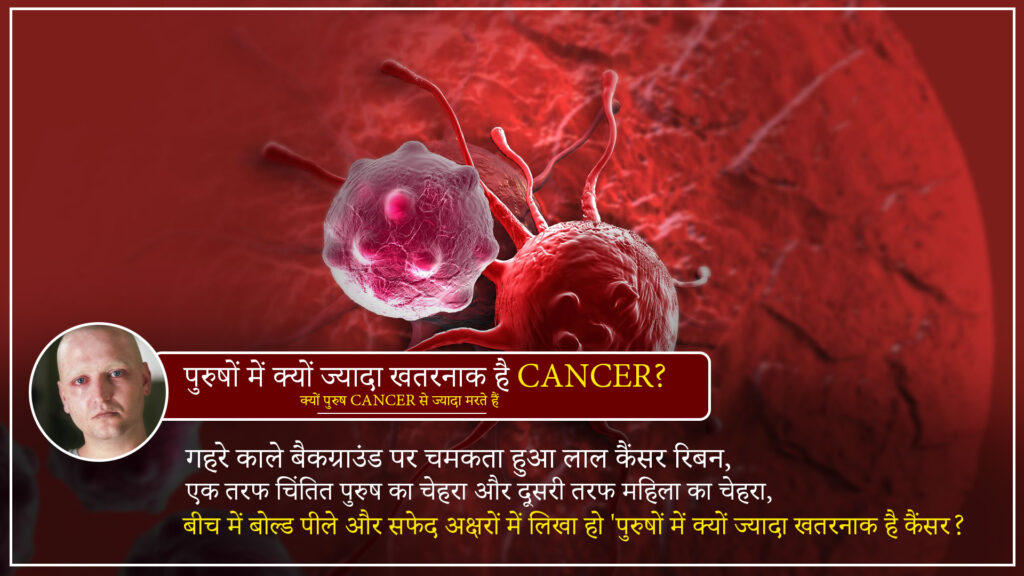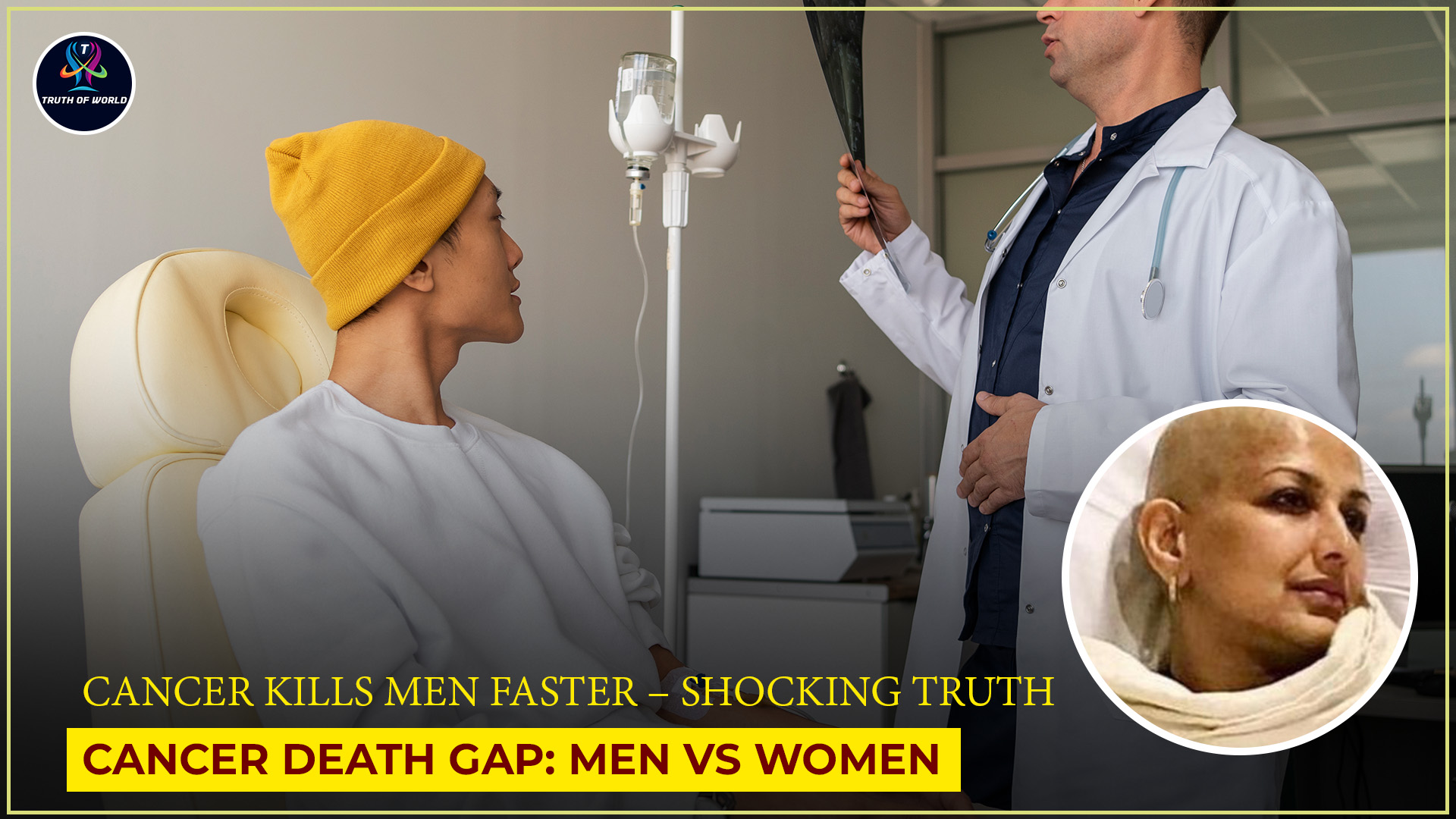Cancer continues to be one of the leading causes of death worldwide. But an important observation from recent studies has highlighted a crucial difference – men face a higher risk of dying from cancer than women. Interestingly, despite more women being diagnosed with cancer, the death rate is significantly higher among men.
Why does this gap exist? Is it due to lifestyle differences, biology, or healthcare access? Let’s dive deep into the findings, expert insights, and the underlying reasons behind this alarming disparity.
The Shocking Reality: Cancer Statistics in India
According to the Global Cancer Observatory (GLOBOCAN) 2022, India ranks:
- 3rd in the world for cancer incidence (new cases)
- 2nd in the world for cancer-related deaths
Between 2015 and 2019, data from 43 cancer registries in India showed that:
- 7,08,223 new cases were reported.
- 51.1% were women, and 48.9% were men.
At first glance, this may suggest that women are at greater risk. However, when we look at mortality, the picture changes drastically—men die more often from cancer compared to women.
Why Do More Women Get Diagnosed but Fewer Die?
Experts point out that the types of cancers most common in women are often more detectable and treatable.
- Breast cancer and cervical cancer – two of the most common cancers among women – can usually be detected in their early stages.
- Early diagnosis increases treatment success rates and survival chances.
Dr. Prashant Mathur, director of ICMR-National Centre for Disease Informatics and Research, explains:
“This disparity can largely be explained by the types of cancers most common in women. They are more likely to be detected early, and effective treatments exist.”

Why Men Face Higher Mortality from Cancer
On the other hand, cancers that are more common in men are often detected late and are harder to treat.
Common cancers in men include:
- Lung cancer
- Oral cavity cancer (linked to tobacco and gutkha use)
- Stomach (gastric) cancer
- Liver cancer
Dr. Abhishek Shankar, oncologist at AIIMS, notes:
“Breast cancer can often be detected by women themselves through self-examination. In comparison, lung cancer doesn’t have such visible or easily identifiable symptoms, which delays medical attention.”
Key Reasons for Higher Male Mortality
- Late diagnosis – Men often ignore symptoms until the disease has progressed.
- Risky lifestyle habits – Higher tobacco, alcohol consumption, and occupational hazards.
- Less awareness – Women are increasingly participating in screening programs, while men lag behind.
- Biological differences – Studies suggest hormonal and genetic variations may also play a role.
Early Detection: The Life-Saving Difference
Why Women Benefit from Early Detection
- Breast cancer: Women often feel a lump and visit doctors sooner. Mammograms and awareness campaigns also play a huge role.
- Cervical cancer: Pap smear tests and HPV vaccination programs have improved detection rates.
Why Men Struggle with Detection
- Lung cancer: Symptoms like persistent cough or breathlessness are often ignored.
- Oral cancer: By the time visible symptoms appear, the disease is already advanced.
- Gastric cancer: Symptoms like acidity or stomach pain are mistaken for common digestive issues.
Risk Factors: Why Men Are More Vulnerable
Several lifestyle and environmental factors put men at higher risk of deadly cancers:
- Tobacco use
- India has one of the world’s highest rates of tobacco consumption.
- Smoking and chewing tobacco are far more common in men, directly linking to oral and lung cancers.
- Alcohol consumption
- Excessive alcohol intake increases the risk of liver and stomach cancers.
- Occupational hazards
- Men are more likely to work in industries involving chemicals, asbestos, or dust exposure.
- Diet and lifestyle
- High intake of processed foods, lack of exercise, and obesity contribute to cancer risk.
- Healthcare behavior
- Women tend to seek medical care earlier, while men often delay hospital visits.
Expert Insights
Dr. Ramana Gogi, Principal Consultant – Medical Oncology, CK Birla Hospital Gurugram, emphasizes:
“Increased incidence of cancer among females is largely due to breast cancer, which often presents in early stages enabling more treatment options and cure rates. In males, cancers like oral cavity and lung cancers often present at advanced stages, limiting treatment options and leading to higher mortality.”
India’s Cancer Burden: A Growing Concern
The rising number of cancer cases in India highlights an urgent need for awareness, prevention, and early detection programs.
Key challenges India faces:
- Limited access to healthcare in rural areas
- Stigma and fear around cancer diagnosis
- High cost of treatment making it unaffordable for many
- Shortage of cancer specialists in smaller cities
Unless these issues are addressed, the mortality gap between men and women may continue to widen.
Steps to Reduce Cancer Deaths in Men
To bridge this deadly gap, experts recommend a multi-level approach:
1. Awareness and Education
- Nationwide campaigns focusing on oral cancer screening in men.
- Encouraging men to undergo regular health check-ups.
2. Lifestyle Modifications
- Reducing tobacco and alcohol consumption.
- Promoting healthy diets and physical activity.
3. Screening and Early Detection
- Accessible and affordable screening programs for men.
- Government policies to include lung and stomach cancer checks in preventive healthcare.
4. Affordable Treatment
- Expanding cancer care facilities in Tier-2 and Tier-3 cities.
- Subsidies and insurance schemes for middle and lower-income groups.
5. Research and Innovation
- More studies on genetic and biological factors that make men more vulnerable.
- Development of targeted therapies and better diagnostic tools.
Conclusion
The findings from cancer registries across India reveal a disturbing truth – even though women are more frequently diagnosed with cancer, men are far more likely to die from it. The primary reason lies in the types of cancers affecting men, combined with late diagnosis, lifestyle risks, and limited treatment options.
To reduce this deadly gap, India needs urgent action in the form of awareness, prevention programs, accessible screening, and affordable treatment facilities. Both men and women must recognize the importance of regular health check-ups and adopt healthier lifestyles.
Cancer is no longer a silent killer—it’s a battle that can be won if detected and treated on time.
About the Author
Ronak Sharma is a writer and digital creator passionate about health, lifestyle, and awareness topics. He regularly researches and writes on issues that impact society, aiming to spread authentic and valuable information for readers.




